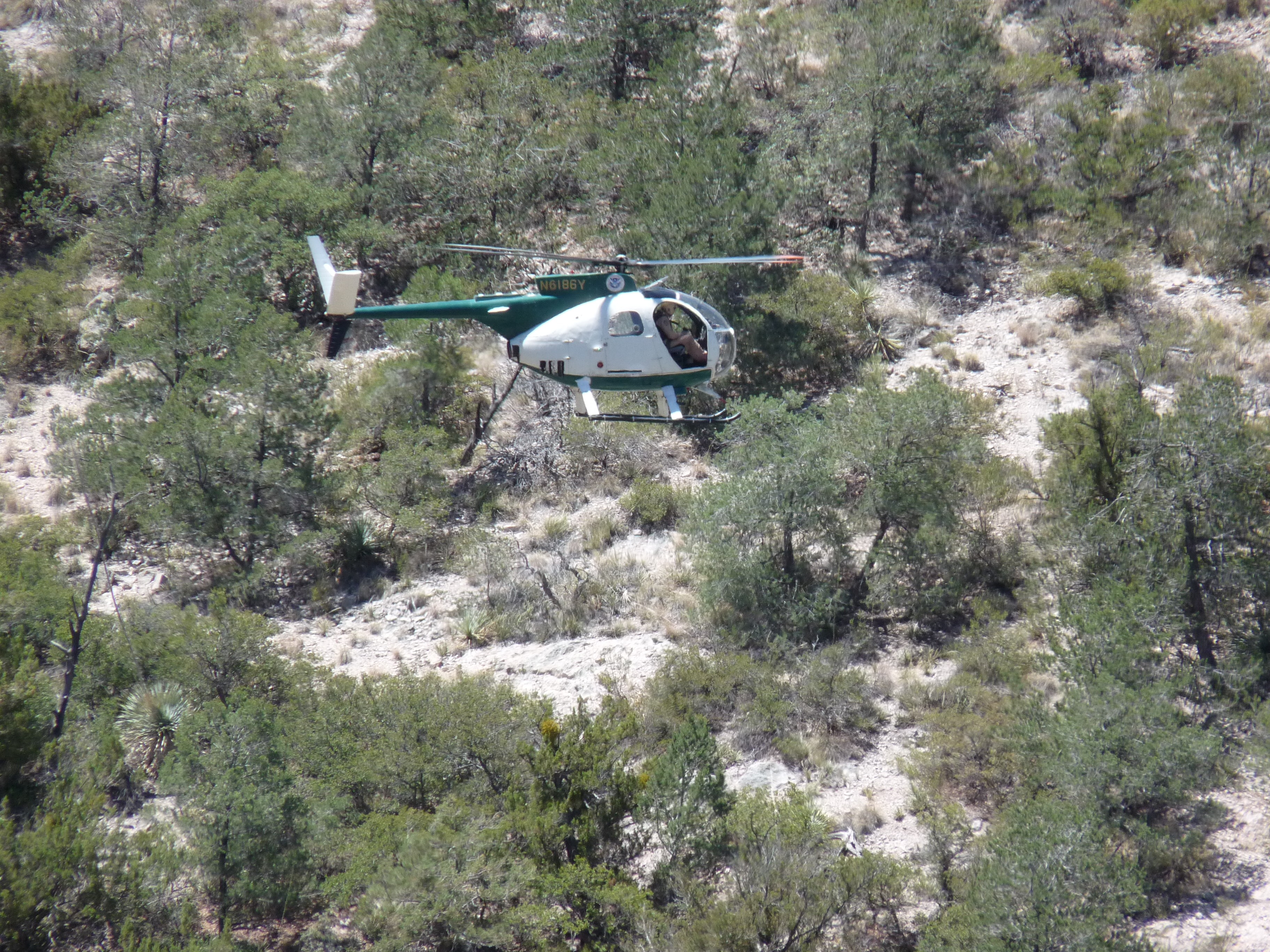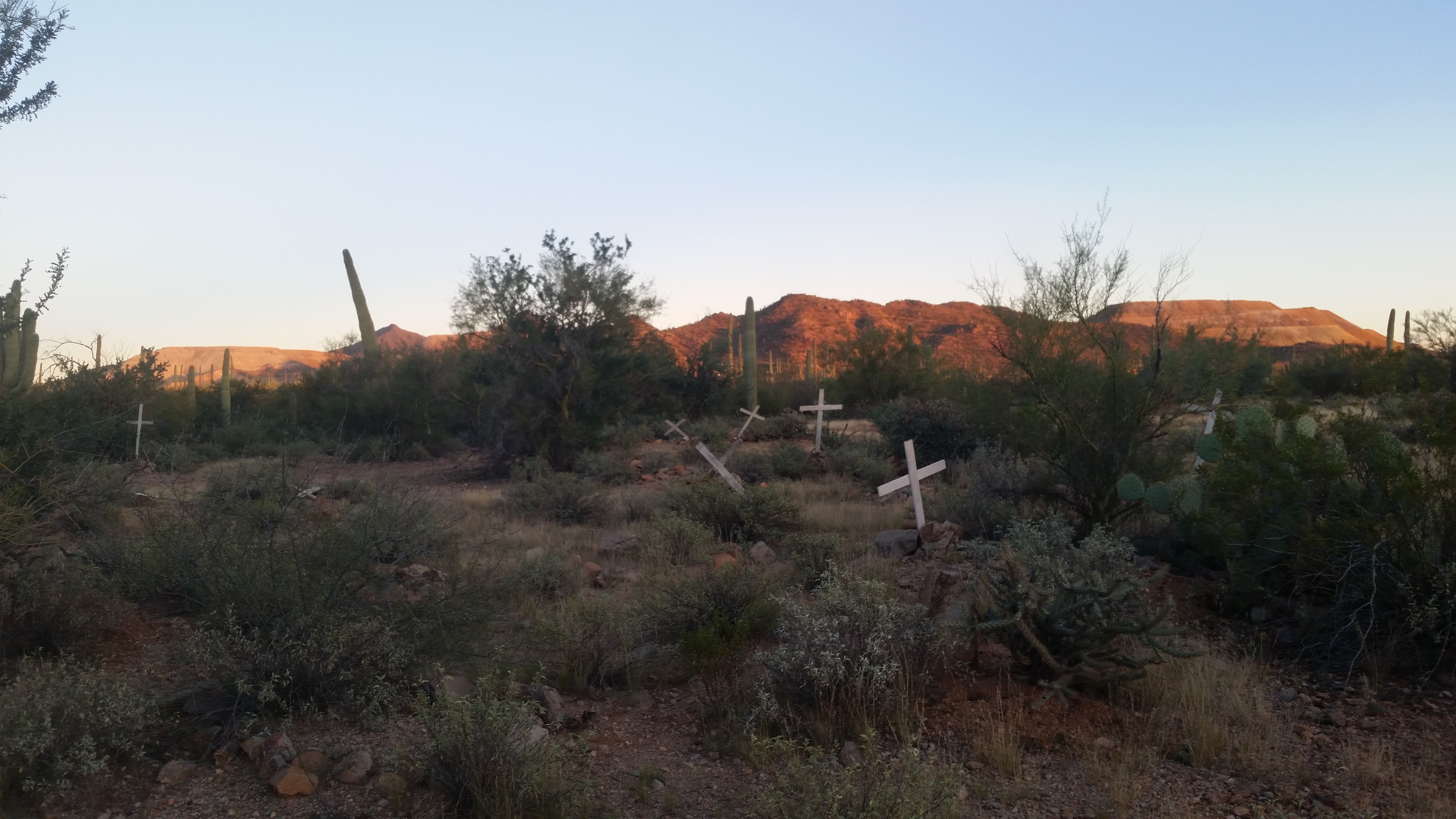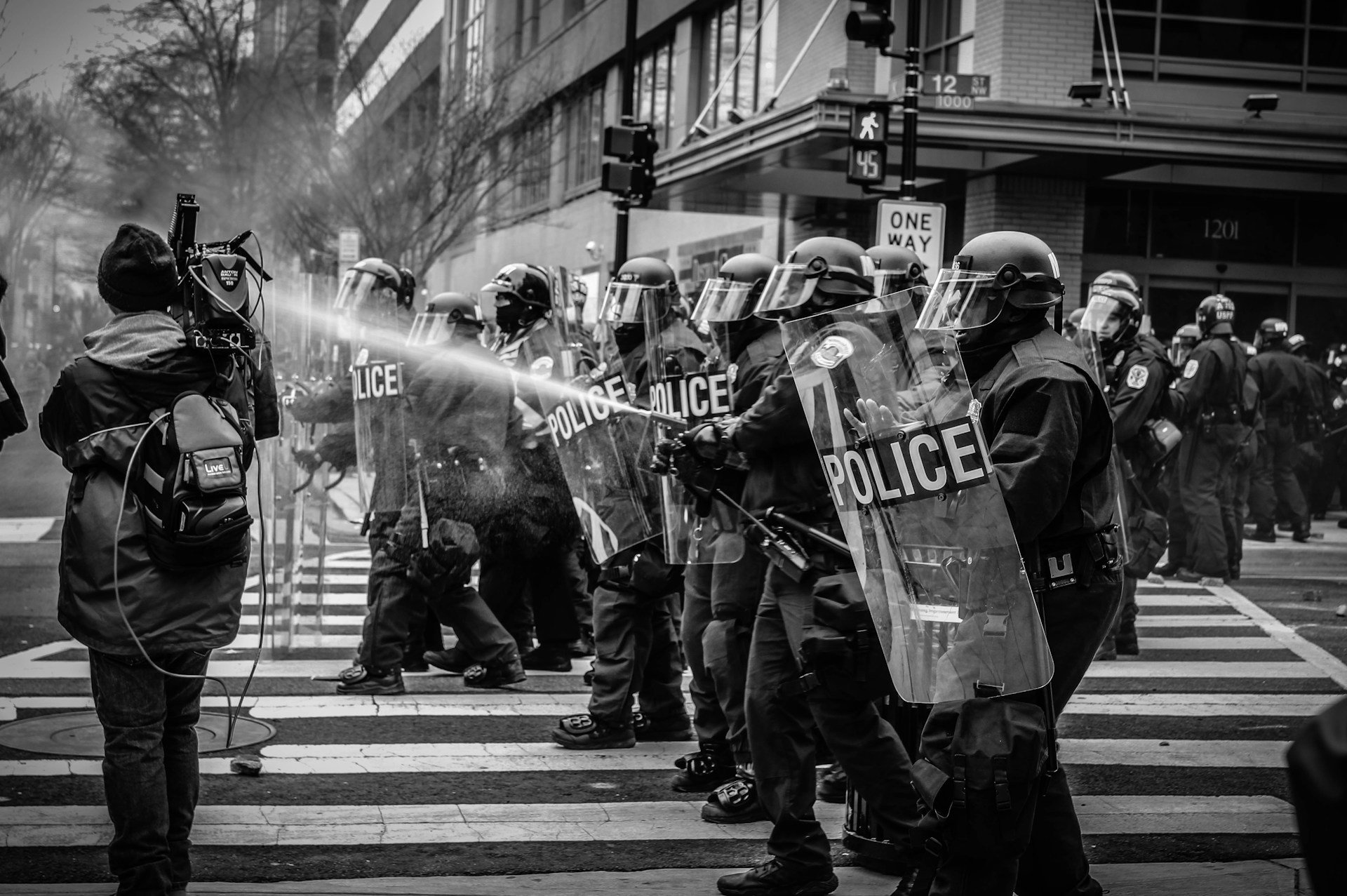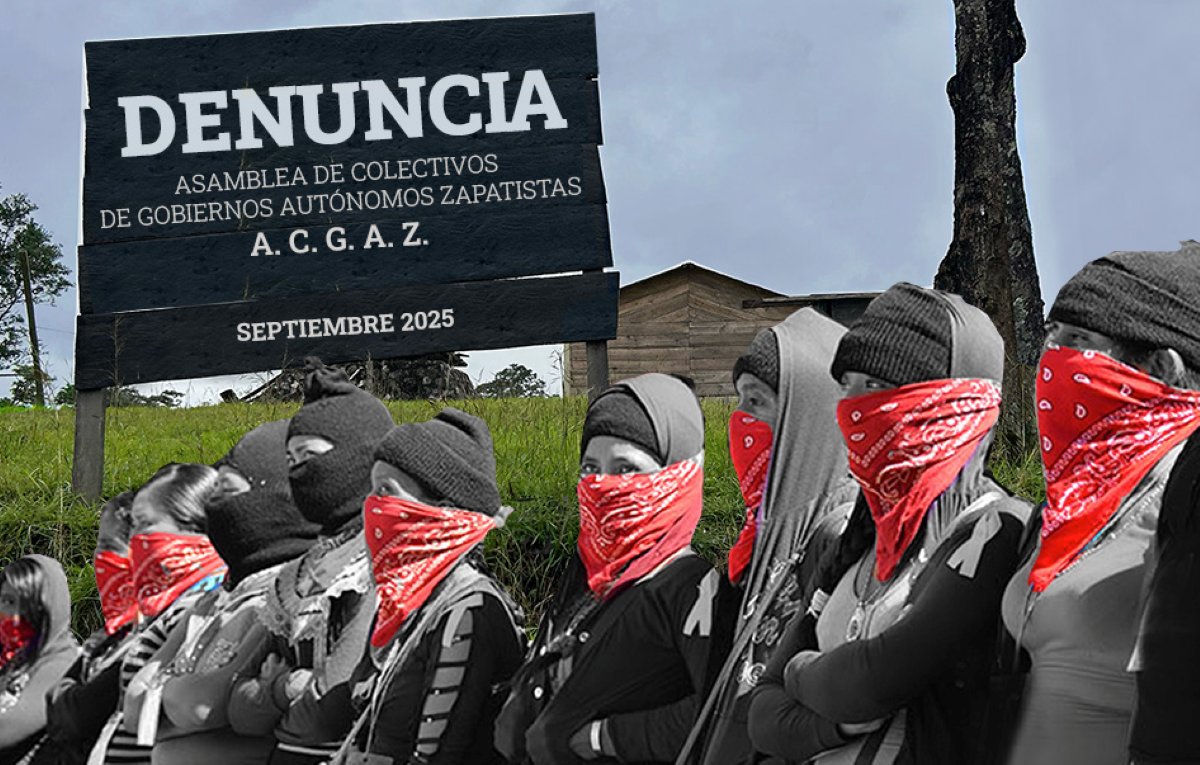Filed under: Analysis, Borderlands, Featured, Immigration, The State, US

In order to understand and contextualize the current moment we must look back at the process through which immigration status changed from a civil issue to a criminal one. Though we will begin this process contemporarily, in the interest of expediency it should be stated that the entire process of all nation-state development has been one of pillage and genocide. When discussing any historical trends in abstraction we must not forget the pain and suffering that occurred on an individual level. Behind the imposition of colonialism, and the creation of white nationalism, lie very real losses, generational trauma and grief that has not ever subsided.
The borderlands have always been a place of transit, with people moving east to west and north to south on footpaths since time immemorial. The contemporary imposition of the border splits preexisting nations in violent and horrific ways. The creation of American and Mexican identities is a colonial project intended to erase indigenous culture and practice. Ethnic and racial fear mongering, anger over miscegenation and a desire to create exploitable populations have always been at the root of US border policy.
 The current US-Mexican border was established through the Texas Annexation of 1845; Mexican Cession via the Treaty of Hidalgo in 1848 ending the Mexican-American War (also known as the North American Invasion), and the Gadsden Purchase in 1853. The Chinese Exclusion Act of 1882 was a hallmark of early border policy. It sought to control the large number of Chinese workers who had labored to finish the railroads. Border policy has always accommodated, and been shaped by, the rise and fall in demand for exploitable labor.
The current US-Mexican border was established through the Texas Annexation of 1845; Mexican Cession via the Treaty of Hidalgo in 1848 ending the Mexican-American War (also known as the North American Invasion), and the Gadsden Purchase in 1853. The Chinese Exclusion Act of 1882 was a hallmark of early border policy. It sought to control the large number of Chinese workers who had labored to finish the railroads. Border policy has always accommodated, and been shaped by, the rise and fall in demand for exploitable labor.
The early years of the Border Patrol, established in 1924, involved a small number of agents on horseback. The territorial reach of Border Patrol expanded slowly and each historical era brought increased duties immunity. Border policy has never been about keeping migrants out of the country, but about controlling and managing populations.
Beginning in 1942, Mexican laborers were brought to the US through the Bracero program. Though the program didn’t officially end until 1964, Operation Wetback in 1954 saw the largest numbers of deportations of Mexican workers until the Obama era. Border enforcement is frequently misunderstood as the imposed political will of forces solely within the US government. However, even early era enforcement was actually a collaborative effort between Mexican landowners, and the US and Mexican governments. For a more thorough history see Border Patrol Nation.
 Strategic initiatives and policies of increased militarization came with the advent of NAFTA in the 90’s. The NAFTA era was a brutal one. Salinas de Gortari’s government in Mexico destabilized the economy, devastated food security, and eliminated Article 27 of Mexican Constitution which changed communal landholding laws to allow private property speculation. As people lost their land through speculative and predatory lending practices, the peso tanked, and the markets were flooded with US subsidized agriculture. A rural to urban migration to the cities soon became a trek north. The “free trade zones” of the border only lasted a few years before they moved to Asia. This was also a period of increased border militarization.
Strategic initiatives and policies of increased militarization came with the advent of NAFTA in the 90’s. The NAFTA era was a brutal one. Salinas de Gortari’s government in Mexico destabilized the economy, devastated food security, and eliminated Article 27 of Mexican Constitution which changed communal landholding laws to allow private property speculation. As people lost their land through speculative and predatory lending practices, the peso tanked, and the markets were flooded with US subsidized agriculture. A rural to urban migration to the cities soon became a trek north. The “free trade zones” of the border only lasted a few years before they moved to Asia. This was also a period of increased border militarization.
Beginning in 1994, Congress and the Border Patrol acted jointly to initiate a policy of “prevention through deterrence,” that would “elevate the risk of apprehension to a level so high that prospective illegal entrants would consider it futile to enter the U.S. illegally.” The urban cities were sealed in the 90s through a series of operations that built border infrastructure and pushed people into the remote desert. The first stretch of physical barrier was put up in the San Diego sector in 1990. This was soon followed by:
1993 Operation Hold the Line: TX
1994 Operation Gatekeeper: CA
1995 Operation Safeguard: AZ
1998 Operation Rio Grande: TX
These operations sealed the cities but did not shift immigration. Greater enforcement obviously does not address root causes of migration. These policies weaponized the desert and provided the impetus for cartels to consolidate human trafficking. Independent coyotes (guides) were no longer tolerated and the journey north became longer, more perilous and more deadly.
 In 2005 the REAL ID Act changed the regulations for state and federal issued ID’ in an attempt to strong-arm states into not allowing undocumented people to obtain local IDs. It also did away with environmental protections, legal safeguards and transparency effectively bulldozing the way for more border wall construction. It was the biggest legal waiver issued in history waiving the Clean Air Act, Native American Graves Protection and Repatriation Act, American Indian Religious Freedom Act and dozens of other regulations and provisions.
In 2005 the REAL ID Act changed the regulations for state and federal issued ID’ in an attempt to strong-arm states into not allowing undocumented people to obtain local IDs. It also did away with environmental protections, legal safeguards and transparency effectively bulldozing the way for more border wall construction. It was the biggest legal waiver issued in history waiving the Clean Air Act, Native American Graves Protection and Repatriation Act, American Indian Religious Freedom Act and dozens of other regulations and provisions.
It was followed in 2006-2010 by the Secure Fence Act. This measure provided funding for new technology, such as infrared sensors, cameras, and towers along the wall. Interestingly, while the high tech security industry flourished, much of the physical wall construction was not actually completed due to exorbitant cost. By 2017, 654 miles of primary fencing had been put in, about 99.5% of the amount initially planned. Currently, landowners in Texas are being threatened with land seizures under eminent domain, referencing the 2006 act.
Militarization created a booming border security industry. Elbit systems, an Israeli company got a $87 million contract to build a virtual fence (to replace Boeing’s blunder) and G4S (formerly Wackenhut) makes a tidy profit providing transportation for detained migrants from the desert to detention facilities and then back to the border for repatriation.
With the border transformed into a low-grade war zone, the commodity speculation turned inwards. 287(g) programs were agreements between local municipalities and DHS that allow local law enforcement to share information with Immigration and Customs Enforcement. In 2008, this was expanded to the Secure Communities Act.
Secure Communities required local law enforcement to share information with Immigration and Customs Enforcement (ICE). Any non-citizens who was arrested would have their information run through an immigration database, if they were undocumented ICE could put a “hold” on them, they would finish their criminal sentence, and afterwards could be held up to 48 hours extra for ICE to come take them into custody. As consequences for being caught increased, the net expanded.
SB1070 was a law passed in AZ in 2010, which requires police to determine the immigration status of someone arrested or detained when there is “reasonable suspicion” they are not in the U.S. legally. Reasonable suspicion is based on racial profiling.
SB1070 was written by members of the American Legislative Exchange Council (ALEC) – a right wing lobbying group that writes model legislation that is then passed by its mostly Republican members to benefit its corporate members. Member companies of ALEC included private prison companies: GEO Group and Corrections Corporation of America (currently attempting to rebrand as CoreCivic). These two companies have received most of the contracts for building private detention centers all over the US. ALEC was also instrumental in passing the “three strikes” legislation and the mandatory minimum sentencing laws that lead to the prison boom in the 90s. ALEC continues to write and pass SB1070 copycat laws in other states.
In 2012, Border Patrol announced a new strategy called the “Consequence Delivery System,” this plan expanded Prevention Through Deterrence and forced immigrants to suffer enhanced “consequences” (incarceration) before being deported. One of the main tools of the CDS is Operation Streamline, a program first used in the Del Rio sector of Texas in 2005. This program mandates that undocumented immigrants crossing the Southern border be prosecuted through the federal criminal justice system.
This is an important departure from previous practices as most immigration cases used to be handled exclusively within the civil immigration system. Now people face misdemeanor and felony charges for crossing; go through mass trials in 8 different border districts and end up serving criminal sentences in private prisons before they are deported.
The expedited trial model used in Streamline will probably be scaled up in our new reality where the interior political terrain now looks a lot like a border town. Police deputization and the cross checking of status between various databases, means that any interaction with a law enforcement official, any stint in jail or prison, can lead to an immigration hold and deportation.
Border policy is a business vestment. The private sector profits from border and prison infrastructure, development and operations, and the US government agencies profit from a massive sustained federal DHS budget to maintain the border. Increased militarization, criminalization and enforcement have strengthened the power of cartels by giving them something compelling to sell: the promise of safe passage through the labyrinth of enforcement.
 Corporations, the US and Mexican governments and cartels make money by moving, containing, and incarcerating undocumented people. As with most shared business partnerships there is a very blurry line between Border Patrol, cartel members and politicians. They should not necessarily be considered discrete entities, which is something we will explore in future dispatches. US Customs and Border Protection (which includes Border Patrol) has proven to be one of the most unaccountable and least transparent, with a culture of rampant abuse.
Corporations, the US and Mexican governments and cartels make money by moving, containing, and incarcerating undocumented people. As with most shared business partnerships there is a very blurry line between Border Patrol, cartel members and politicians. They should not necessarily be considered discrete entities, which is something we will explore in future dispatches. US Customs and Border Protection (which includes Border Patrol) has proven to be one of the most unaccountable and least transparent, with a culture of rampant abuse.
Just as the US-Mexican border expands into the interior of the US, the southern border of Mexico is militarized through Plan Frontera Sur. Mexico deported more Central Americans than the U.S. did last year, and with US funding. As people debate the further construction of a wall on the US-Mexico border, it is important to consider that for people traveling from further south, Mexico is the wall.
The US continues its dubious practice of funding atrocity in the name of strengthening democracy. US congressional funding streams like the Merida Initiative, say they are “building democracy,” but really train and arm the executioners of human rights abuses… again more on cartel violence, state collusion and repression of social movements at a later date.
US-funded political repression in the south pushes people north but the process of applying for asylum has become ever harder. Border Patrol agents routinely deny people the right to apply for asylum. Rather than face months or years in immigration detention waiting for a credible fear hearing that has a slim chance of leading to papers, many people are continuing north to Canada where they hope their chances are better.
In the States, a previous deportation or criminal history precludes people from accessing what legal relief is available to them. Now that illegal reentry is being used to take people into custody, immigrating is the crime. Even those who in the past qualified for exceptions are vulnerable. Many people are reasonably confused about the safety of DACA status, which was a temporary reprieve passed as an executive order under Obama that gave some security to those brought to the US as children.
DACA activists played a hard strategic game by referencing ideas of innocence and delineating themselves as good deserving immigrants. While this may have seemed pragmatic at the time, many may now wish they had focused more on delegitimizing the entire posit of criminality, instead of seeking protected status. Now any conviction, or even suspected criminality, pretty much negates your DACA status. As we have seen, these categories of criminality are wide and expansive. There is no deserving and non-deserving immigrant anymore- everyone is at risk of deportation.
Private prison speculation has made the fight against borders a fight against prisons. While the numbers of those taken into detention remain similar- as disturbingly high under Trump as Obama, what has changed is the rate of continued detention.
The court’s records reveal that since Trump assumed office, a total of 25,942 cases have been initiated by DHS seeking removal orders…While the pace of filings remains unchanged, there has been a sharp change between Trump and Obama cases in whether individuals are detained by Immigration and Customs Enforcement (ICE) while their cases are pending. At the time of the court filing the majority (54%) of Obama’s cases were not detained. This was true for only a quarter (25%) of Trump’s cases.
As more people are awaiting the adjudication of their case behind bars, the previous strategies of communal bail bond funds are becoming less effective. Bond amounts have continued to increase, and stipulations on release become stricter, even as officials say that supervised release rules haven’t changed. Trumps’ executive orders, while not changing the law, have certainly given ICE officers new license to enforce at will. Therefore, the already backlogged immigration system will see an increase in cases and wait times.
There has been much to-do about Trump defunding “sanctuary” cities that don’t deputize their police force or share information across systems quite they way he wants them to. Except, the courts won’t easily allow defunding of programs that don’t have anything to do with enforcement. The government may be able to pull money for municipal police but the courts won’t allow defunding of unrelated social programs. Congress can do that, but thankfully Trump hasn’t had a lot of luck working with Congress. Trump has set up a hotline where people can report acts of criminality by illegal aliens, and it has been flooded with reports of UFO and alien abduction.
It also doesn’t look like the government is going to shut down over the border wall appropriations at this time. Trumps’ fixation on building more border wall, and Congress’ hesitation to fund it, of course ignores the fact that the geographical remoteness of the areas where people currently cross, combined with sadistic Border Patrol tactics, already acts as a deterrent. It is actually a preferential one for those crafting border policy as it causes psychological stress and suffering to those it doesn’t kill.
So while the dooms day prophecies of the Trump administration are interesting to speculate about, things don’t have to get worse in order to spur action. Things are already sufficiently terrible. The violence and deprivation that people are fleeing, the situation on the southern border and the conditions in immigration detention mean that every deportation already is potentially life threatening.
Where does this all leave us? It leaves us with a lot of work to do. The intersections between no border work and prison abolition have never been more salient. This is our moment to reach out across ethnicity, language, and geography to build coalitions for community defense.
A good place to start is with community organizers working on rapid responses systems, legal clinics that assist with what legal reprieves are left, groups that support asylum seekers and immigration-detention focused prisoner support organizations. Every person that receives community support to avoid being taken into detention or who we help fight to stay, is one less person who has to face the perilous journey north again. The frontlines of the border crisis are now being fought in the interior of the country.
Folks in Tacoma at the Northwest Detention Center have been on strike this month. NWDCResistance has been organizing a truly amazing support campaign. As mentioned previously, lots of people are doing, and have been doing, this work. Reach out to the people in your town that are already working on these issues and learn from them!
As the border internalizes and spreads to all parts of the country so too must resistance. May these struggles, however dark, bring us a renewed appreciation for the beauty of the world and the ephemeral joys of life outside the prison-bloc. Let this work give us pause to count our blessings and better love our friends and family while we still have them with us. We will continue to struggle for a world without borders and when we can resist no longer, it will be our loved ones and comrades, who take up the labor in our stead.
Next time we will touch upon counterinsurgency, the murky legacy of the drug war and how it affects the borderlands.
If you have not had a chance, please consider reading Designed to Kill, The Insurgent Southwest and To Die in Mexico.








